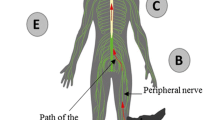Abstract
During experimental Angiostrongylus costaricensis infections in several inbred mouse strains, genetic factors as well as different cytokine secretion patterns have recently been shown to play a role in the outcome of infection in terms of morbidity and mortality, e.g. BALB/c mice show a high and C57BL/6 mice a low mortality during the acute phase of infection. In this study, C57BL/6 MHC-II knockout mice infected with A. costaricensis did not show increased mortality during the acute phase of infection when compared with wild-type mice. Furthermore, MHC-II knockout mice showed a strongly diminished parasite-specific humoral and cellular immune response, which can be explained by the nearly complete lack of CD4+ T cells in the periphery. This defect in MHC-II genes, the lack of CD4+ T cells, and the resulting cellular and humoral unresponsiveness resulted in a three times higher output of first-stage larvae in feces compared with wild-type animals. The results indicate that during experimental A. costaricensis infection a parasite-specific immune response, directed via MHC-II molecules and CD4+ T cells, is not essential for the survival of C57BL/6 mice during the acute phase of infection, whereas the elimination of first-stage larvae seems to be regulated by a MHC-II- and CD4+ T-cell-dependent mechanism.



Similar content being viewed by others
References
Aoki M, Sugaya H, Ishida K, Yoshimura K (1998) The role of CD4+ and CD8+ T-cells in host morbidity and innate resistance to Angiostrongylus cantonensis in the mouse. Parasitol Res 84:91–99
Cardell S, Merkenschlager M, Bodmer H, Chan S, Cosgrove D, Benoist C, Mathis D (1994) The immune system of mice lacking conventional MHC class II molecules. Adv Immunol 55:423–440
Cheever AW, Duvall RH, Hallack TA (1987) Variation of hepatic fibrosis and granuloma size among mouse strains infected with Schistosoma mansoni. Am J Trop Med Hyg 37:85–97
Cosgrove D, Gray D, Dierich A, Kaufman J, Lemeur M, Benoist C, Mathis D (1991) Mice lacking MHC class II molecules. Cell 66:1051–1066
Else KJ, Grencis RK (1991) Cellular immune responses to the murine nematode parasite Trichuris muris. I. Differential cytokine production during a chronic infection. Immunology 72:508–513
Else KJ, Wakelin D (1988) The effects of H-2 and non-H-2 genes on the expulsion of the nematode Trichuris muris from inbred and congenic mice. Parasitology 96:543–550
Fallon PG, Richardson EJ, Smith P, Dunne DW (2000) Elevated type 1, diminished type 2 and impaired antibody response are associated with hepatotoxicity and mortalities during Schistosoma mansoni infection in CD4-depleted mice. Eur J Immunol 30:470–480
Geiger SM, Graeff-Teixeira C, Soboslay PT, Schulz-Key H (1999) Experimental Angiostrongylus costaricensis infection in mice: immunoglobulin isotype responses and parasite-specific antigen recognition after primary low-dose infection. Parasitol Res 85:200–205
Geiger SM, Abrahams-Sandi E, Soboslay PT, Hoffmann WH, Pfaff A W, Graeff-Teixeira C, Schulz-Key H (2001) Cellular immune responses and cytokine production in BALB/c and C57BL/6 mice during the acute phase of Angiostrongylus costaricensis infection. Acta Trop 80:59–68
Goldsby RA, Kindt TJ, Osborne BA (2000) Kuby Immunology, 4th edn. Freeman, New York
Graeff-Teixeira C, De-Avila-Pires FD, Machado RC, Camillo-Coura L, Lenzi HL (1990) Identification of wild rodents as hosts of Angiostrongylus costaricensis in southern Brazil. Rev Inst Med Trop Sao Paulo 32:147–150
Graeff-Teixeira C, Camillo-Coura L, Lenzi HL (1991) Histopathological criteria for the diagnosis of abdominal angiostrongyliasis. Parasitol Res 77:606–611
Hoffmann WH, Pfaff AW, Schulz-Key H, Soboslay PT (2001) Determinants for resistance to microfilaraemia in Litomosoides sigmodontis filaiasis. Parasitology 122:641–649
Hoffmann WH, Pfaff AW, Schulz-Key H, Soboslay PT (2003) Litomosoides sigmodontis filariasis: development and parasite persistence in permissive MHC-class II gene knockout mice. Exp Parasitol (in press)
Ishih A, Nishimura M (1997) Differential responses of SM/J and A/J mice to experimental Angiostrongylus costaricensis infection. Int J Parasitol 27:1411–1414
Ishih A, Ohno T, Nishimura M, Terada M (2000) Genetic analysis of mortality in murine angiostrongyliasis costaricensis using SMXA recombinant inbred mouse strains. Parasitol Int 49:335–338
Ishii AI, Sano M (1989) Strain-dependent differences in susceptibility of mice to experimental Angiostrongylus costaricensis infection. J Helminthol 63:302–306
Loría-Cortés R, Lobo-Sanahuja JF (1980) Clinical abdominal angiostrongylosis. A study of 116 children with intestinal eosinophilic granuloma caused by Angiostrongylus costaricensis. Am J Trop Med Hyg 29:538–544
Morera P (1973) Life history and redescription of Angiostrongylus costaricensis Morera and Céspedes, 1971. Am J Trop Med Hyg 22:613–621
Ohno T, Ishih A, Wakana S, Nishimura M, Terada M (2002) Mouse H2 haplotype influences on the survival rate after Angiostrongylus costaricensis infection. Exp Parasitol 100:140–142
Wassom DL, Brooks BO, Cypress RHP, David CS (1983) A survey of susceptibility to infection with Trichinella spiralis of inbred mouse strains sharing common H-2 alleles but different genetic backgrounds. J Parasitol 69:1033–1037
Acknowledgements
This study received financial support from the fORTÜNE program of the University of Tübingen. Exchange of scientists was supported by the PROBRAL program (DAAD/CAPES).
Animal experiments were performed according to the German law at the animal facilities of the Institute for Tropical Medicine in Tübingen.
Author information
Authors and Affiliations
Corresponding author
Rights and permissions
About this article
Cite this article
Geiger, S.M., Hoffmann, W.H., Soboslay, P.T. et al. Angiostrongylus costaricensis infection in C57BL/6 mice: MHC-II deficiency results in increased larval elimination but unaltered mortality. Parasitol Res 90, 415–420 (2003). https://doi.org/10.1007/s00436-003-0853-2
Received:
Accepted:
Published:
Issue Date:
DOI: https://doi.org/10.1007/s00436-003-0853-2




